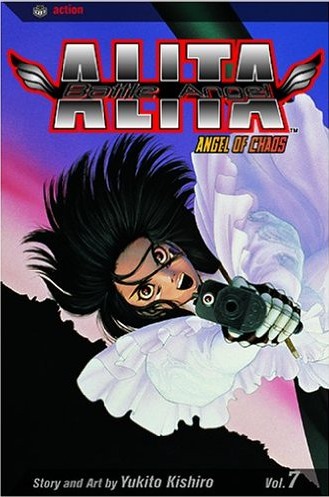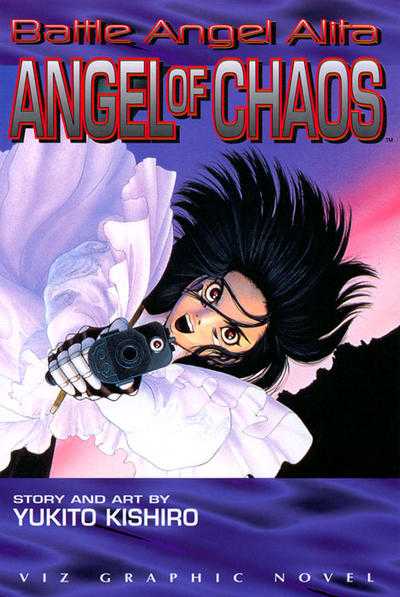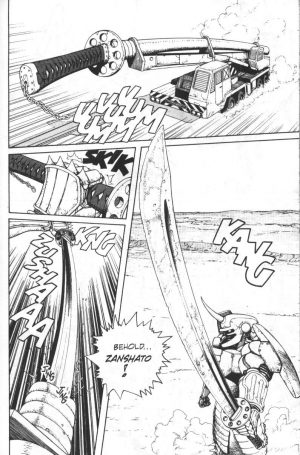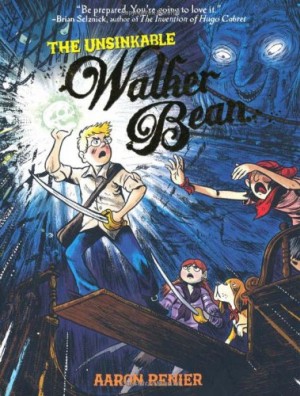Review by Ian Keogh
Right at the start of the series Alita was established as part of the Scrapyard, a vast community organised around a scrapheap of rubbish discarded from the floating city of Tiphanes. While a few citizens of Tiphares have been seen, Yukito Kishiro has so far refrained from showing the city itself from anything other than a distance, reinforcing an aspirational quality for Scrapyard residents. Lou is newly assigned as Alita’s contact, and on her journey to work we see Tiphares as looking much like any futuristic and luxurious 21st century city. Lou is knowledgable, but nervous, and that’s nicely contrasted with Alita, becoming ever more human despite her artificial state. The link with Tiphares increases her skill set as she’s able to access technology warning her of potential threats via satellite uplink. They’re also able to provide Alita with transport, nicely designed, enabling her passage around the vast Badlands.
Although the opening sequence suggests Angel of Chaos picks up immediately after Angel of Death, later comments indicate some time has passed, and it’s been a decade since Angel of Redemption’s traumatic events. The time lapse permits the effective reintroduction of Koyomi, last seen as an infant, and with her come some other interesting characters as Kishiro moves more into spiritual consideration. At the same time he’s also widening the dangers, introducing new societies amid the wreckage of the old, all this featuring consistently imaginative artistic design and character creation.
Among the new people seen is someone with the talent of psychometry, able to read the pasts of inanimate objects. Kishiro uses this in a very creative way, the recreation of music via old instruments and the people who’ve previously played them being only the starting point. However, Battle Angel Alita has reached this point via constantly escalating threats, and they continue, with the sample art showing how the sword used by one of them has to be transported. Similar playful visual invention is plentiful, not least Alita facing her greatest threat dressed as a bride.
By the end of what has been an excellent, twisting adventure, confusion has been sown. Tiphares is elitist and distant, but are the residents also responsible for the post-apocalyptic society we’ve been seeing over seven volumes to date? Alita has been content to follow instructions from Tiphares, but has she been misguided? It’s a question that follows her into Fallen Angel after yet another of Kishiro’s extraordinarily sharp endings. That’s combined with this as Battle Angel Alita Deluxe Edition Vol. 4.






